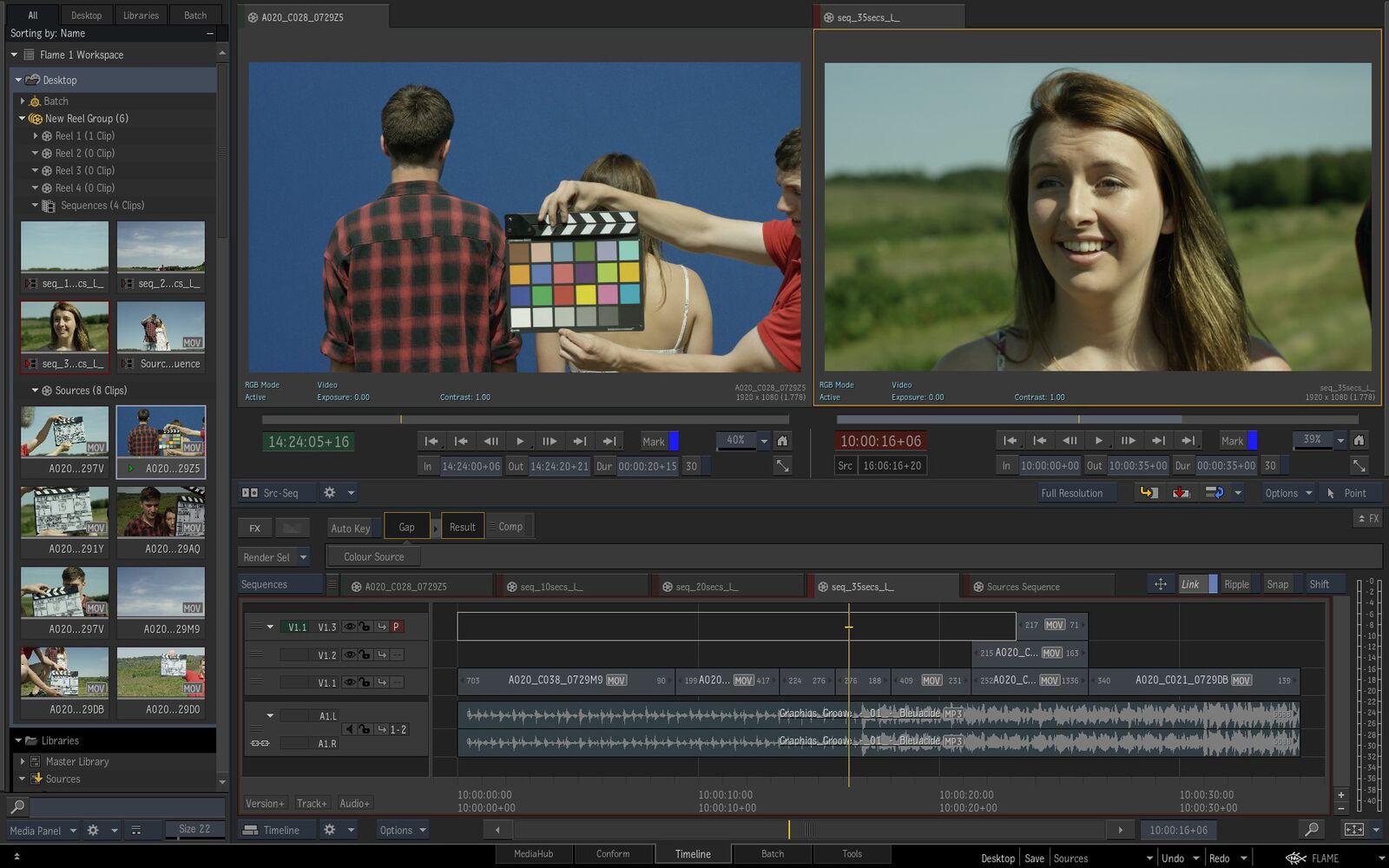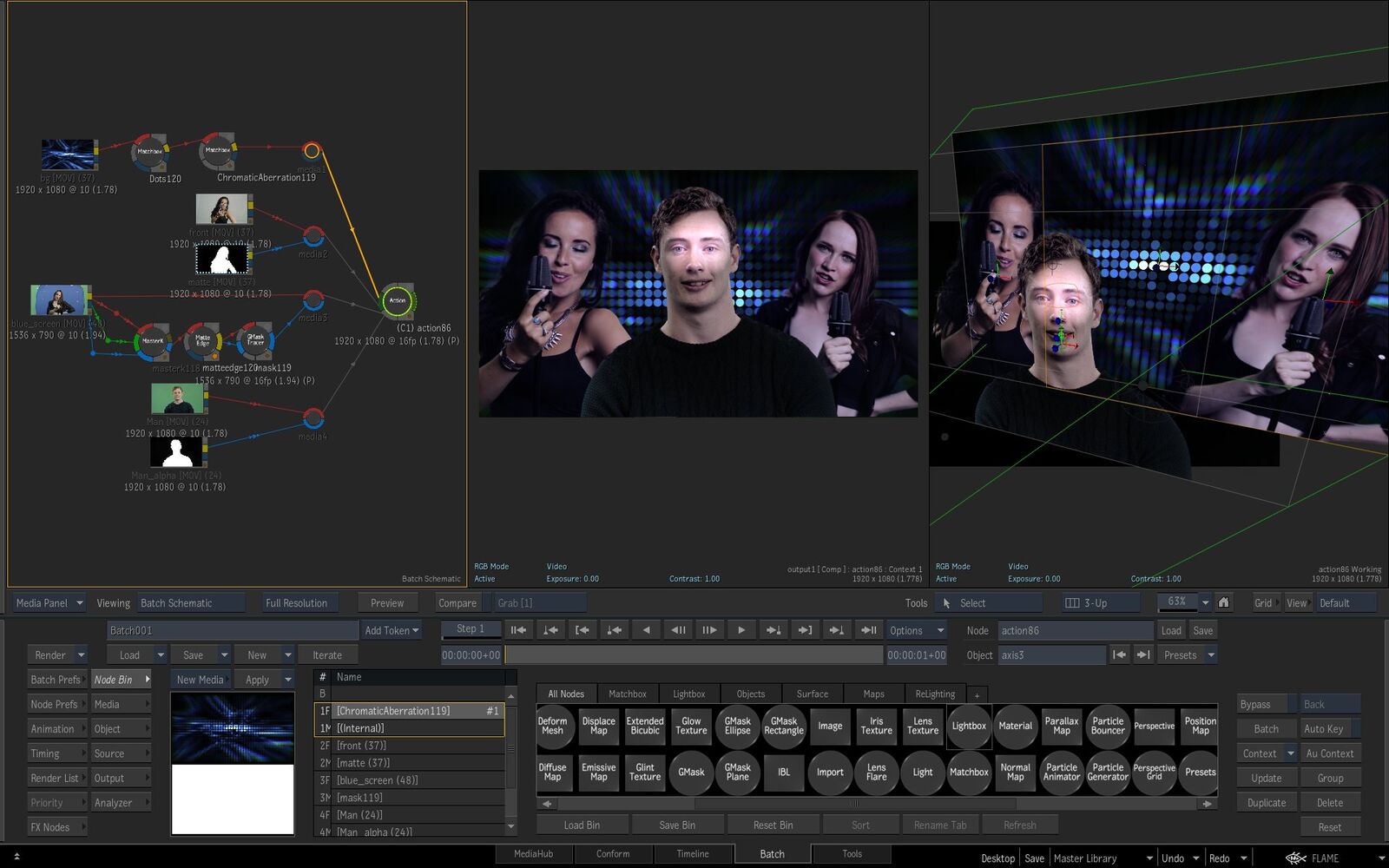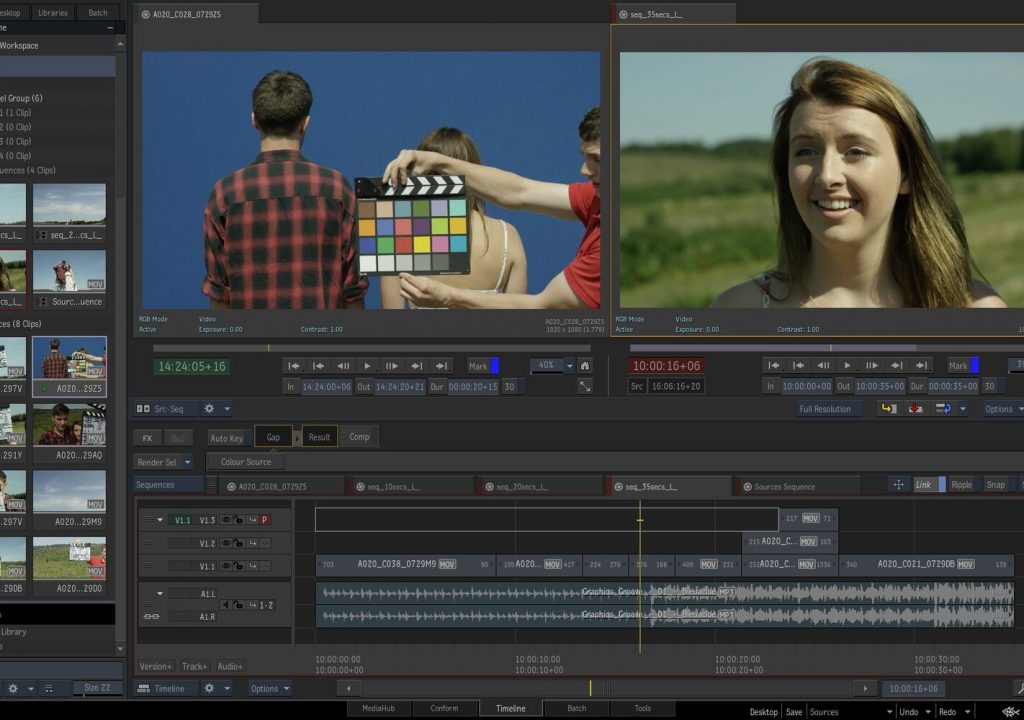
Subscription models have changed the way users across the industry expect to access and utilize their software. Not too long ago the expectation was around purchasing a piece of software outright, but many have embraced the subscription model to the point that it is now the preference.
That reality is illustrated by the new Desktop Subscription options for Autodesk Flame software which were announced today. You can check out the details via the press release below, but we were able to grab Marc Hamaker, Autodesk’s Senior Industry Marketing Manager for Media & Entertainment, to ask him a few quick questions about what this news means for current and future users.
ProVideo Coalition: This news showcases a further embrace of the subscription model by Autodesk. How has this model impacted the way Autodesk approaches the market?
Marc Hamaker: This new model is allowing Autodesk to evolve our relationships with customers and the 3D and visual effects market overall. With Desktop Subscriptions we’re able to deliver more frequent and regular updates to our software. Subscription pricing makes it easier to get started with professional software by lowering upfront costs, which is especially important for smaller business and freelancers. It also improves the relationship between Autodesk and our customers, because we’re working harder than ever to deliver value to keep customers engaged.
Specifically, in the case of Flame, adding subscription offerings makes it more affordable than ever to get started with the software or invest in more seats. A lot of our customers have been asking for it, including freelancers who work with Flame-based facilities.
How will this affect existing Flame users?
For current users there isn’t really any immediate impact. They can continue to keep current licenses under support and receive updates. They can also choose to purchase additional seats of Flame as either perpetual or term-based subscription licenses.
Long term, the changes are great for existing customers too. One of the key advantages of the subscription model is that it allows Flame customers to add seats on a temporary basis when business ramps up. Now, when a big job comes through the door, they can add additional seats of Flare, Flame Assist or Flame and staff them for the duration of the project. When the job is over, they aren’t left with a perpetual license that they have to keep busy on an ongoing basis to cover the costs. This is exactly what we’ve seen happen in facilities using Maya and 3ds Max through Desktop Subscription, so it’s easy to imagine our visual effects and finishing customers doing the same. I also think this will be great for stimulating and growing the talent pool of Flame freelance artists that now have access to their own tools to bring to projects – whether they are using Flare, Flame Assist or Flame.
Were you getting feedback that indicated the pricing model for Flame was one of the main reasons users might have been hesitant to utilize it?
We’re gathering feedback all the time. In user forums we hear from customers and we’re always monitoring social media commentary; we also keep tabs on industry happenings and trends. And, we interact with a lot of customers directly at events, trade shows and one-on-one meetings. Relationships are definitely a two-way street, so we’re dedicated to listening to our customers and making changes where we can to address feedback.
What sort of creative opportunities do you see this opening up for professionals at every level?
I think this is going to make it possible for a lot more artists to get their hands on Flame tools, but Flame is and will likely remain in place at the very high-end of post. In a lot of ways, the user persona for Flame isn’t changing significantly with these changes to our business model. What’s really changing is that we’re making it easier for these artists to get the tools they’ve been telling us they want. Flame users will still be working in high-end post and finishing, and they’ll be working on solving tough creative challenges. In the future, I think we’ll see broader adoption of Flame itself and Flame tools through Flame Assist and Flare; this is great for the entire post industry. We’ll be watching how the community reacts to the news, and reviewing feedback as we head into NAB next year.

SAN FRANCISCO, November 4, 2015 – Today, Autodesk is announcing new Desktop Subscription options for Autodesk Flame software. The new subscription pricing for Flame starts at $750USD per month and can be accessed annually for as low as $500USD SRP* per month. Autodesk also announced Flame support for OS X as part of the Autodesk Flame Extension 2 release, available late November 2015. Autodesk Flare and Autodesk Flame Assist software are now available as standalone products with monthly subscription prices, starting at $400USD SRP*.
*US pricing only. Actual prices may be determined by your reseller.
Important news for the Flame Family:
- New monthly, quarterly and annual Subscription options for Flame, Flare, Flame Assist and Autodesk Lustre
- Unrestricted ability to purchase Flare and Flame Assist licenses with no requirement to own Flame software already
- Customers may source their own qualified Linux hardware for Flame Family products
- New support for Flame on OS X in addition to Linux and the announcement of the Flame Family 2016 Extension 2 release available later in November
With these changes, Autodesk is evolving the entire Flame Family to meet the needs of a growing base of creative professionals including freelancers and smaller facilities that need access to powerful 3D visual effects and finishing tools to tackle tough jobs. The new subscription offerings provide a lower cost for facilities expanding their creative capabilities and for smaller studios and individual freelancers who work on a project basis. Autodesk plans to continue to sell perpetual licenses of Flame Family.
- Early next year: sales of Flame as a turnkey system will discontinue.
- Today: Flame will be available as a software only product. Customers can choose their own qualified Linux hardware.
- Late November: license Flame on the Apple Mac OS X. Recommended configuration specifications for Flame running on OS X will be available soon.
“The changes we are making allow us to continue to provide our Flame users with the tools they need to grow and transform their businesses, now and in the future, as well as to ensure that our business continues to serve them. With the new Flame business model, it’s never been easier for artists and studios to access these powerful tools they need for the high-end finishing their customers demand,” shared Marc Stevens, vice president, Film & TV, Autodesk . “Community feedback is vital to the future of Flame, and these changes reflect what our customers want; they’ll also allow us to meet the emerging needs of staff artists, freelancers and facilities by offering more choices, just like the rest of Autodesk.”
Flame Family 2016 Extension 2 Information
Autodesk has also announced the upcoming Flame Family 2016 Extension 2 release that will be available to customers later this month. It brings new format support and stunning performance gains in color grading workflows. Lustre Reactor brings new GPU acceleration to color grading workflows and significantly improves performance when using blur, keying and softness controls for both preview and rendering operations. Other enhancements in Lustre include 32-bit floating point GPU rendering locally, via Shot Reactor and when using Autodesk background rendering software; performance enhancements when working with Open EXR source media with embedded mattes; UI support for high DPI monitors (4K); and new Print View and Print LUT support when using AJA SDI output. Across the Flame family of products, when importing media, artists can take advantage of new support the full DNxHR media family by using either QuickTime or MXF containers, as well as updated support for R3D media files including R3D SDK 6.0.3, allowing Flame to directly support the new Dragon 6K sensor and Rec 2020 color space. When exporting media, the extension supports Sony MPEG-4 Part 2 Simple Studio Profile (SStP) encoding in an MXF wrapper, supporting a variety of formats and presets.
Desktop Subscription Pricing and Availability
As of today, the 2016 versions of Flame, Lustre, Flare and Flame Assist are available for purchase as software subscription only through an Autodesk Reseller or Autodesk Sales Representative. For more information, visit autodesk.com/FlameUnleashed.
About Autodesk
Autodesk helps people imagine, design and create a better world. Everyone—from design professionals, engineers and architects to digital artists, students and hobbyists—uses Autodesk software to unlock their creativity and solve important challenges. For more information visit autodesk.com.
Autodesk, the Autodesk logo, Flame, Lustre, Flame Assist and Flare are registered trademarks or trademarks of Autodesk, Inc., and/or its subsidiaries and/or affiliates in the USA and/or other countries. All other brand names, product names or trademarks belong to their respective holders. Autodesk reserves the right to alter product and services offerings, and specifications and pricing at any time without notice, and is not responsible for typographical or graphical errors that may appear in this document.
© 2015 Autodesk, Inc. All rights reserved.

Filmtools
Filmmakers go-to destination for pre-production, production & post production equipment!
Shop Now













